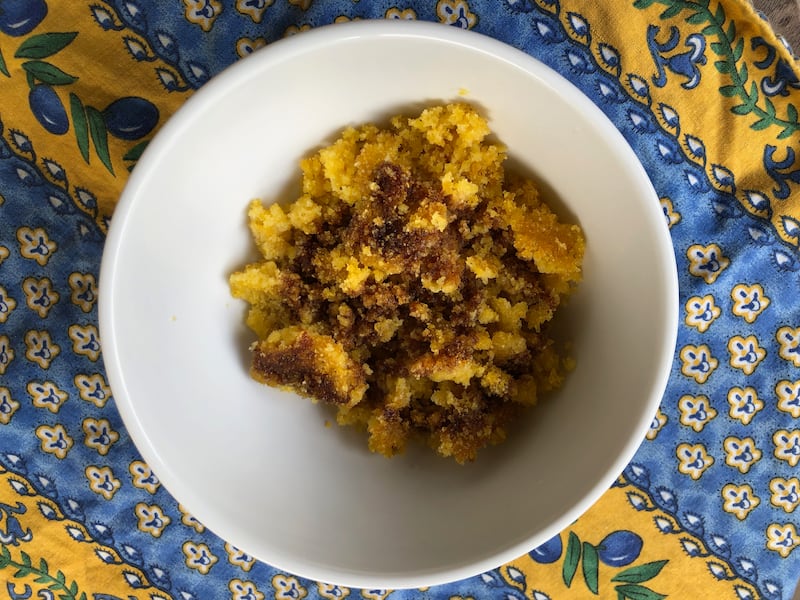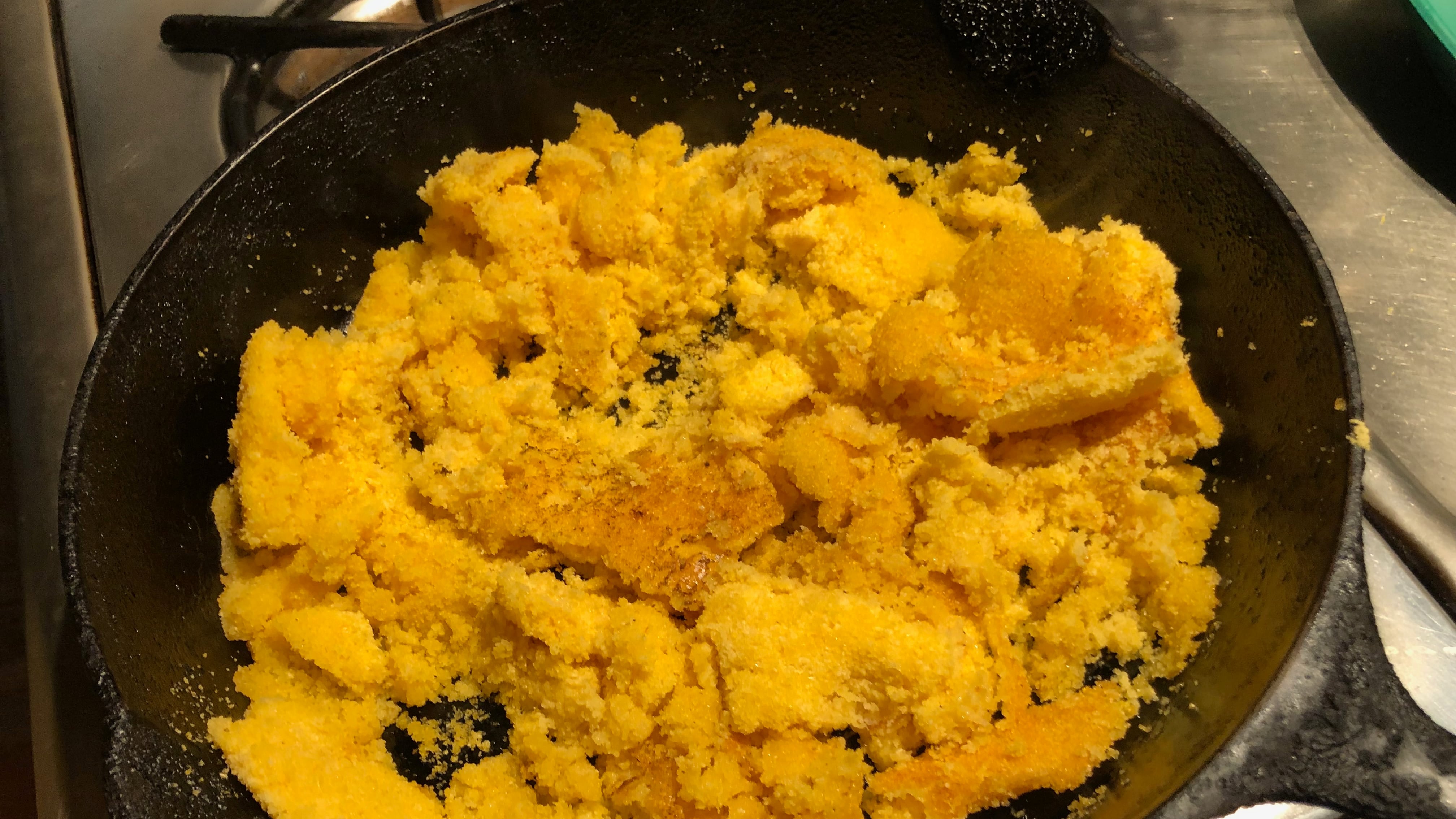Jim Dixon wrote about food for WW for more than 20 years, but these days most of his time is spent at his olive oil-focused specialty food business Wellspent Market. Jim’s always loved to eat, and he encourages his customers to cook by sending them recipes every week through his newsletter. We’re happy to have him back creating some special dishes just for WW readers.
I read about cush cush for years before I knew how to make it. Dave Robicheaux, the deeply flawed Louisiana cop in James Lee Burke’s crime novels, often cooked it for breakfast. At first I thought it was another version of fried cornmeal mush, leftover cooked grits, or polenta cut into slabs and fried until crispy. Or maybe it was day-old cornbread crumbled into a hot skillet. I couldn’t Google it when I read the first Robicheaux book in the late 1980s, but eventually the internet filled with a million recipes, including several for different versions of cush cush (also spelled coush coush or couche couche).
It’s basically pan-fried cornbread. You mix cornmeal with milk or water, some salt and maybe baking powder, then cook it in a skillet on the stove, preferably in bacon grease. Robicheaux usually pours a little milk and cane syrup over his bowlful, but I’ve also seen savory versions with onion, hot peppers, and sometimes cracklins or greens.

The name itself comes from the Senegambian kush, the steamed or boiled grains of millet or sorghum that were a staple of the West African diet. French colonization transformed the name to couscous, and enslaved Africans in the New World made it from this continent’s indigenous grain, corn. Like many foods brought to America by the enslaved, cush cush lost its connection to history and today is often just called Cajun cush.
Fraught history aside, cush cush demonstrates how a handful of basic ingredients and simple cooking technique can still be very tasty. It’s even better if you use whole-grain cornmeal, the kind you need to keep in the freezer since the oils in the germ can become rancid. You won’t find it at the grocery store, but you might get lucky at the farmers market. Or you can order it online from sources like Anson Mills (and we often have local cornmeal from Ayers Creek Farm at Wellspent Market). But good fat is the real secret, whether it’s bacon grease, butter, or extra-virgin olive oil. While cane syrup is traditional, it can be hard to find. I’ve found sorghum syrup at New Seasons, and it has almost the same flavor as cane syrup.
Cush Cush
2 cups cornmeal
1 cup water*
1 teaspoon baking powder**
1/2 teaspoon salt
3-4 tablespoons extra-virgin olive oil
Sorghum or maple syrup for serving
*some recipes call for milk, and it makes the cush cush a little richer
**optional, but it gives the cush cush a bit more body
Mix cornmeal, water, baking powder and salt into a thick batter. Heat the olive oil in a heavy skillet, preferably cast iron, over medium heat until it starts to ripple. Add batter, spread out evenly, and let cook undisturbed for about 10 minutes or until the bottom is beginning to brown. Break up the cush cush with a spatula, turning the pieces over. Reduce heat to low, cover, and let cook for another 15 minutes or so.
Serve with syrup. Milk, cream or yogurt along with jam or honey are also good.

